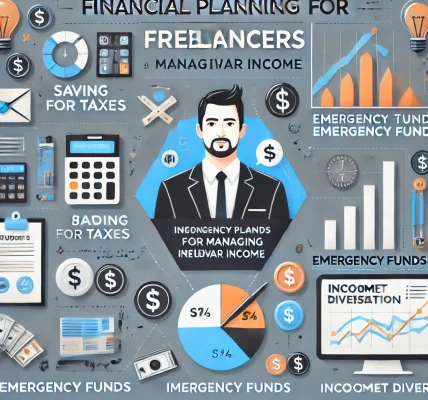Debt can be overwhelming, but the right debt management plan (DMP) can help you regain control of your finances and work toward a debt-free future. Whether you’re struggling with credit card bills, personal loans, or other financial obligations, choosing the right debt management strategy is essential. In this guide, we’ll explore different types of debt management plans, their pros and cons, and how to determine which one suits your financial situation best.
1. What is a Debt Management Plan?
A debt management plan (DMP) is a structured repayment strategy that helps individuals repay their debts in a manageable way. These plans typically involve negotiating lower interest rates, consolidating payments, and setting up a repayment schedule to clear debts over time.
Key Benefits of a DMP:
✅ Simplifies debt repayment with a single monthly payment.
✅ Helps reduce interest rates and late fees.
✅ Prevents creditors from taking legal action in some cases.
✅ Encourages responsible financial habits and budgeting.
2. Types of Debt Management Plans
There are various debt management solutions available, each designed for different financial situations. Below, we discuss the most common options:
a) Debt Consolidation
Debt consolidation involves combining multiple debts into a single loan with a lower interest rate.
Pros:
- Simplifies payments by consolidating multiple debts into one.
- Often comes with lower interest rates, reducing total repayment costs.
- Helps improve credit scores when managed properly.
Cons:
- Requires good credit to qualify for favorable loan terms.
- May extend repayment periods, increasing the total amount paid over time.
- Risk of accumulating more debt if spending habits don’t change.
Best for: Those with multiple high-interest debts who qualify for a lower-interest consolidation loan.
b) Credit Counseling and Debt Management Programs
Credit counseling agencies offer structured debt management programs (DMPs) to help individuals pay off their debts systematically.
Pros:
- Professional financial guidance and budgeting advice.
- Reduced interest rates and waived late fees through negotiation.
- Structured, predictable repayment plans.
Cons:
- Typically takes 3-5 years to complete.
- Requires closing credit card accounts, impacting credit scores.
- Not all creditors agree to participate.
Best for: Individuals who need professional guidance and want to repay debts without taking on new loans.
c) Debt Settlement
Debt settlement involves negotiating with creditors to pay a reduced amount in a lump sum.
Pros:
- Can significantly reduce the amount owed.
- Provides a quicker path to resolving debt compared to long-term repayment plans.
Cons:
- Can severely damage credit scores.
- Creditors are not obligated to agree to settlements.
- May have tax implications (forgiven debt is sometimes considered taxable income).
Best for: Those facing extreme financial hardship and unable to repay the full debt amount.
d) Bankruptcy
Filing for bankruptcy is a legal process that eliminates or restructures debt for individuals unable to repay their financial obligations.
Pros:
- Can provide a fresh financial start by discharging debts.
- Stops wage garnishments and creditor harassment.
- Protects certain assets under bankruptcy laws.
Cons:
- Significantly damages credit scores and remains on credit reports for 7-10 years.
- Not all debts (like student loans) are dischargeable.
- Legal and filing fees can be expensive.
Best for: Individuals with overwhelming debt who have no feasible repayment options.
3. How to Choose the Right Debt Management Plan
Key Factors to Consider:
- Debt Amount & Type: Identify the total amount you owe and the types of debts you have (credit cards, personal loans, medical bills, etc.).
- Interest Rates: High-interest debts may require a consolidation loan or settlement.
- Financial Stability: Assess your ability to make consistent payments before selecting a plan.
- Credit Score Impact: Some plans negatively impact credit scores more than others.
- Long-Term Financial Goals: Choose a plan that aligns with your goals, such as improving credit or reducing financial stress quickly.
Quick Guide to Choosing a Plan:
| Situation | Recommended Plan |
|---|---|
| Multiple high-interest debts | Debt Consolidation Loan |
| Need structured repayment & guidance | Credit Counseling / Debt Management Program |
| Facing extreme financial hardship | Debt Settlement or Bankruptcy |
| Unable to make monthly payments | Bankruptcy |
4. Common Debt Management Mistakes to Avoid
🚫 Ignoring Debt: Delaying action can lead to increased interest and legal issues.
🚫 Taking on More Debt: Avoid accumulating new debt while working on repayment.
🚫 Falling for Scams: Research financial service providers to avoid fraudulent debt relief companies.
🚫 Not Changing Spending Habits: Without financial discipline, debt can pile up again even after clearing existing balances.
5. Final Thoughts
Choosing the right debt management plan requires a thorough evaluation of your financial situation, goals, and repayment capability. Whether you opt for debt consolidation, credit counseling, settlement, or bankruptcy, the key is to take proactive steps toward financial freedom.
Key Takeaways:
✅ Understanding different debt management plans helps in choosing the right solution.
✅ Debt consolidation and DMPs are effective for structured repayment.
✅ Debt settlement and bankruptcy should be last-resort options.
✅ Financial discipline and budgeting are crucial to staying debt-free.
By choosing the right debt management plan and committing to smart financial habits, you can take control of your debt and build a more secure financial future.
Disclaimer:
This article is for informational purposes only and should not be considered financial or legal advice. Always consult with a certified financial advisor before making any financial decisions.



